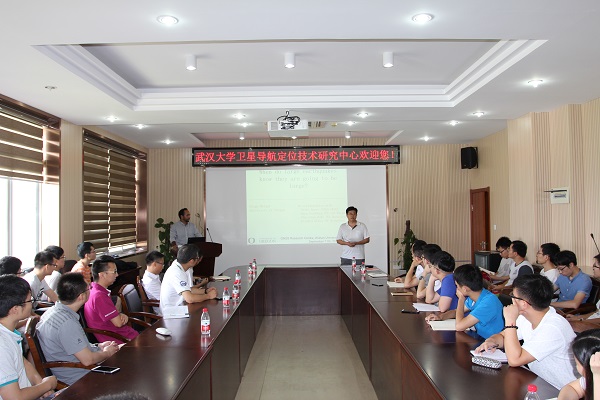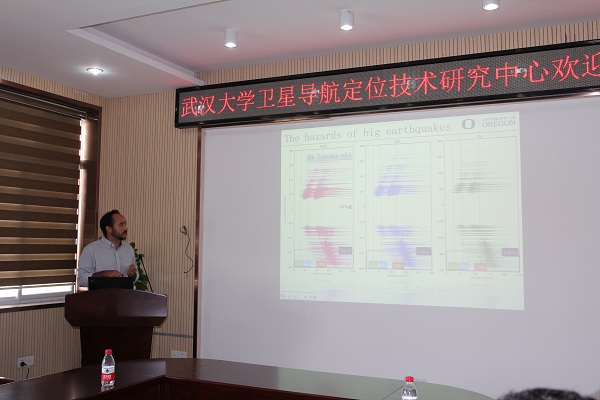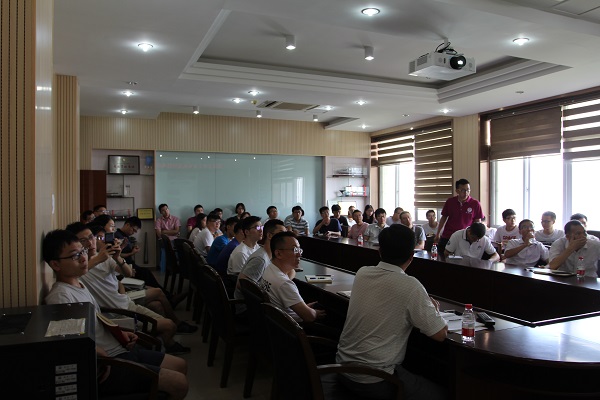2019年11月18日上午,应耿江辉教授的邀请,加拿大约克大学教授Sunil Bisnath在我中心13楼会议室为我中心师生作了题为“GNSS PPP performance using mass-market hardware”的学术报告。耿江辉教授、叶世榕教授、聂桂根教授、方荣新教授及相关研究生参加了本次学术报告会。
Sunil Bisnath教授从PPP的优势和低成本接收机(板卡、芯片、天线等模块)开始介绍,重点通过实验分析了包括swiftNav Piksi、μ-blox、智能手机等在内的低成本硬件的信号强度与信号质量,并且展示了在静态开阔环境、车载动态城市环境等多种实验场景中的收敛时间和定位性能。Sunil Bisnath教授还指出了下一步的研究工作和未来的研究方向。
与会的师生就自己关心的问题与Sunil Bisnath教授进行了提问和沟通。这场新颖、详实、有趣的报告在师生们热烈的掌声中结束。
报告摘要:
The next generation of low-cost, multi-frequency, multi-constellation GNSS receivers, boards, chips and antennas are now quickly entering the market. The presented work provides an investigation into the potential for mass-market, high-accuracy positioning. A set of experiments have been carried-out, collecting measurements from a number of low-cost, dual-frequency, multi-constellation GNSS boards, chips and antennas. In order to be comprehensive and realistic, these static and kinematic experiments were conducted in benign, typical, suburban and urban environments.
The Precise Point Positioning (PPP) GNSS measurement processing mode has been used for measurement processing. While real-time kinematic (RTK) and network RTK dominate urban and suburban markets, it was deemed of great scientific interest to assess the PPP performance with these hardware options with and without additional local augmentation corrections.
Analysis of the raw measurements illustrates a) some significant measurement gaps with some sensors, b) the lower signal availability and c) the weaker signal strength from the chip/antenna combinations as compared to geodetic quality instrumentation, d) high pseudorange multipath and noise, and e) some interesting measurement curiosities. Results for new smartphone sensors show positioning performance is typically at the few dm-level with limited convergence period – 1 to 2 orders of magnitude better than standard point positioning. The GNSS chips and boards combined with higher-quality antennas produce positioning performance approaching geodetic quality. And under ideal conditions, phase ambiguities are resolvable. However, there are a number of caveats to these performance assessments, as consistence of results is lower for all of these new sensors as compared to geodetic hardware.
These results are very promising for the use of PPP and RTK in next-generation GNSS sensors for smartphone, vehicle, Internet of things (IoT), etc. applications. Future work includes further tuning of the measurement processing, ambiguity resolution, and use of AI techniques for measurement filtering.
(以下为会场照片)



版权所有:武汉大学卫星导航定位技术研究中心pride课题组 当前访问量:112343 技术支持:武汉楚玖科技有限公司